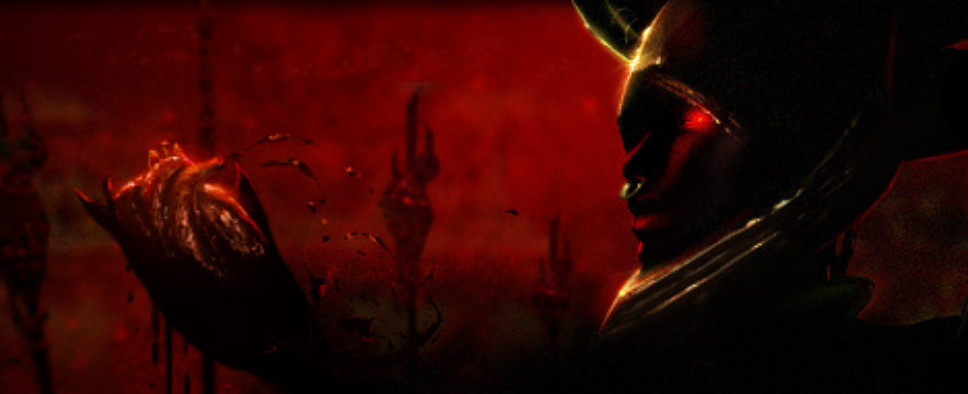Path of Exile: Legion Patch Preview and Jewel Design, Part 2
-
Category: News ArchiveHits: 1643

Picking up where last week's announcements left off, Grinding Gear Games lets us know what's next on the docket for the Path of Exile team, and then shares some additional insights into the design of the game's newly added keystone-altering jewels. Here's a couple of examples and you take things from there:
Vaal
Divine Flesh
This was one of the first keystones to be done, but it went through a fair number of changes before the final version. Originally, this did not have the bonus to maximum Chaos Resistance at all, and simply read as follows.
Your maximum Energy Shield is 0
100% of Elemental Damage is taken as Chaos Damage
The intent behind this was to make it so you had to stack no Elemental Resistance at all, but instead your character needed to max out your chaos resistance instead. Of course, we were making the change such that this applied to DoTs too. But of course, such a design had problems and it comes down to Chaos Inoculation.
While CI is probably my favourite keystone in the game, I cannot deny that it certainly limits design space in many ways. Due to the existence of CI, making a pure chaos damage boss fight is usually not something we can ever do. Well, this keystone took that problem and added it to every single pure elemental boss fight in the game. Worse, with this keystone, it rewarded respecing to get CI before any pure elemental fight.
Okay, this is a significant problem and we obviously couldn't let this go into the game as is. After a discussion we reasoned that we didn't necessarily need to have all your damage be taken as Chaos, just a significant amount. In addition, we could provide some maximum Chaos Resistance which is an incredibly rare stat to help with this property. The keystone changed from being something that caused a player to not stack elemental resistances at all, but instead now took the form of a powerful way to mitigate elemental damage altogether when you stacked enough chaos resistance. This proved to be quite fun and an interesting incentive to stack chaos resistance and ended up being the version that got released!
Eternal Youth
Another keystone done very early on, the idea behind this goes a while back. I had wanted to make a unique item several leagues ago that caused your Life to recharge instead of Energy Shield. This concept was also one of the ideas in the massive corrupted keystone document.
The reason we ended up dropping this back then was because recharge was very much Energy Shield's thing. Having Life steal it simply made Energy Shield feel less special. However, do you remember one of the rules I had made for what makes a good keystone? A keystone is the natural place to circumvent the rules of the game, and it made complete sense to do it here. We have plenty of keystones already that have Energy Shield taking aspects of Life such as Ghost Reaver and Zealot's Oath, so let's do one in reverse!
This changed very little during development, with the only change being a less severe downside in the final version. The original one in development completely prevented Life Regeneration and Leech, but that didn't seem necessary. We were also going to have the keystone give some amount of Life, but that didn't seem necessary either.
Corrupted Soul
This keystone came from a desire to further try to promote the playstyle the unique item Corrupted Energy tried to do. Since this was going to be a keystone, we could go a lot crazier and riskier with it.
This was very obviously designed from the beginning as a hybrid-focused keystone. One of the strengths hybrids have is the ability to recover two "life bars" at once, but you almost never need to. By distributing the damage amount between the two pools, you had the ability to take advantage of this. On top of this, the keystone rewarded you with some more Energy Shield that scaled off your life total as a payoff.
You may also be interested in this recent PC Gamer feature that takes a look at the game's early days and its continuing development. An excerpt:
Grinding Gear made Path of Exile public for a weekend during Diablo III’s launch to drum up interest—and in early 2013, they began open beta. After running the game with a few thousand paying players, the studio didn’t know how many would show up on the shores of Wraeclast now the game was free-to-play. “This was the scary point,” Wilson says. “We knew it could be a lot more—potentially tens of thousands.”
In the event, nearly 80,000 testers played concurrently. It was the outcome the studio had hoped for, and it was horrendous. Support tickets flooded in as server problems emerged, fielded by just 20 developers at the time.
“It turned to hard mode immediately,” Wilson says. “Because now we’re expected to run a full-on games-as-a-service thing. Nowadays, we have dozens of people that handle all that stuff to make it seamless. But it’s tricky to decide to expand before you need it, because that feels like wasting money at the time.”
Staffing up wasn’t a simple process. With a lack of experienced developers in the local area to pull from, Grinding Gear would have to make time to train new hires—time it no longer had. “There were a lot of sleepless nights and learning the hard way,” Wilson says, “as you do when the servers just keep crashing.”

